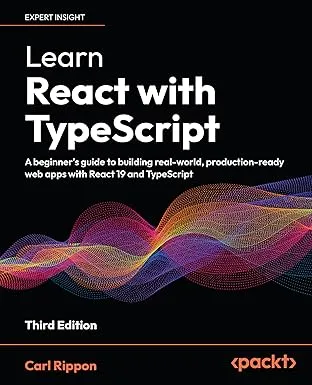Using Currying to Pass Additional Data to React Event Handlers
An example
There are cases when we want to pass additional data to a React event handler. Consider the example below:
const List = ({ items,}: { items: string[],}) => { const handleClick = () => { console.log( "How do I get the item related to the button?" ); }; return ( <ul> {items.map((item) => ( <li key={item}> <span>{item}</span> <button onClick={handleClick}> Log </button> </li> ))} </ul> );};We want to pass the list item data to handleClick.
We could use an inline anonymous function handler that calls handleClick passing in the list item:
const List = ({ items,}: { items: string[],}) => { const handleClick = (item: string) => { console.log(item); }; return ( <ul> {items.map((item) => ( <li key={item}> <span>{item}</span> <button onClick={() => handleClick(item)} > Log </button> </li> ))} </ul> );};There is an arguably nicer approach, though, called currying. First, let’s understand what currying is.
What is currying?
Currying is an approach when functions receive one argument at a time.
So instead of:
const func = (a, b) => { ... }A currying approach would be:
const func = (a) => (b) => { ... }An improved handleClick
We can use a currying handleClick as follows:
const List = ({ items,}: { items: string[],}) => { const handleClick = (item: string) => () => { console.log(item); }; return ( <ul> {items.map((item) => ( <li key={item}> <span>{item}</span> <button onClick={handleClick(item)}> Log </button> </li> ))} </ul> );};So, the click handler is the second function. The first function passes the list item to the handler.
Neat!
Another example
Another example where currying is useful is form field change handlers. Typically we may have something like this where each field has a separate change handler:
<form onSubmit={handleSubmit}> <input type="text" placeholder="Enter your name" value={values.name} onChange={handleNameChange} /> <input type="text" placeholder="Enter your email" value={values.email} onChange={handleEmailChange} /> <textarea placeholder="Enter some notes" value={values.notes} onChange={handleNotesChange} /> <button type="submit">Save</button></form>Currying can help us condense the change handlers into a single handler:
const handleChange = (fieldName: string) => ( e: React.ChangeEvent< HTMLInputElement | HTMLTextAreaElement >) => { setValues({ ...values, [fieldName]: e.currentTarget.value, });};
return ( <form onSubmit={handleSubmit}> <input type="text" placeholder="Enter your name" value={values.name} onChange={handleChange("name")} /> <input type="text" placeholder="Enter your email" value={values.email} onChange={handleChange("email")} /> <textarea placeholder="Enter some notes" value={values.notes} onChange={handleChange("notes")} /> <button type="submit">Save</button> </form>);The change handler is the second function. The first function passes the field name to the handler.
Neat!
These examples can be found in CodeSandbox at https://codesandbox.io/s/curry-event-handlers-q38xq?file=/src/index.tsx
Learn React with TypeScript - 3rd Edition
NewA comprehensive guide to building modern React applications with TypeScript. Learn best practices, advanced patterns, and real-world development techniques.
View on Amazon